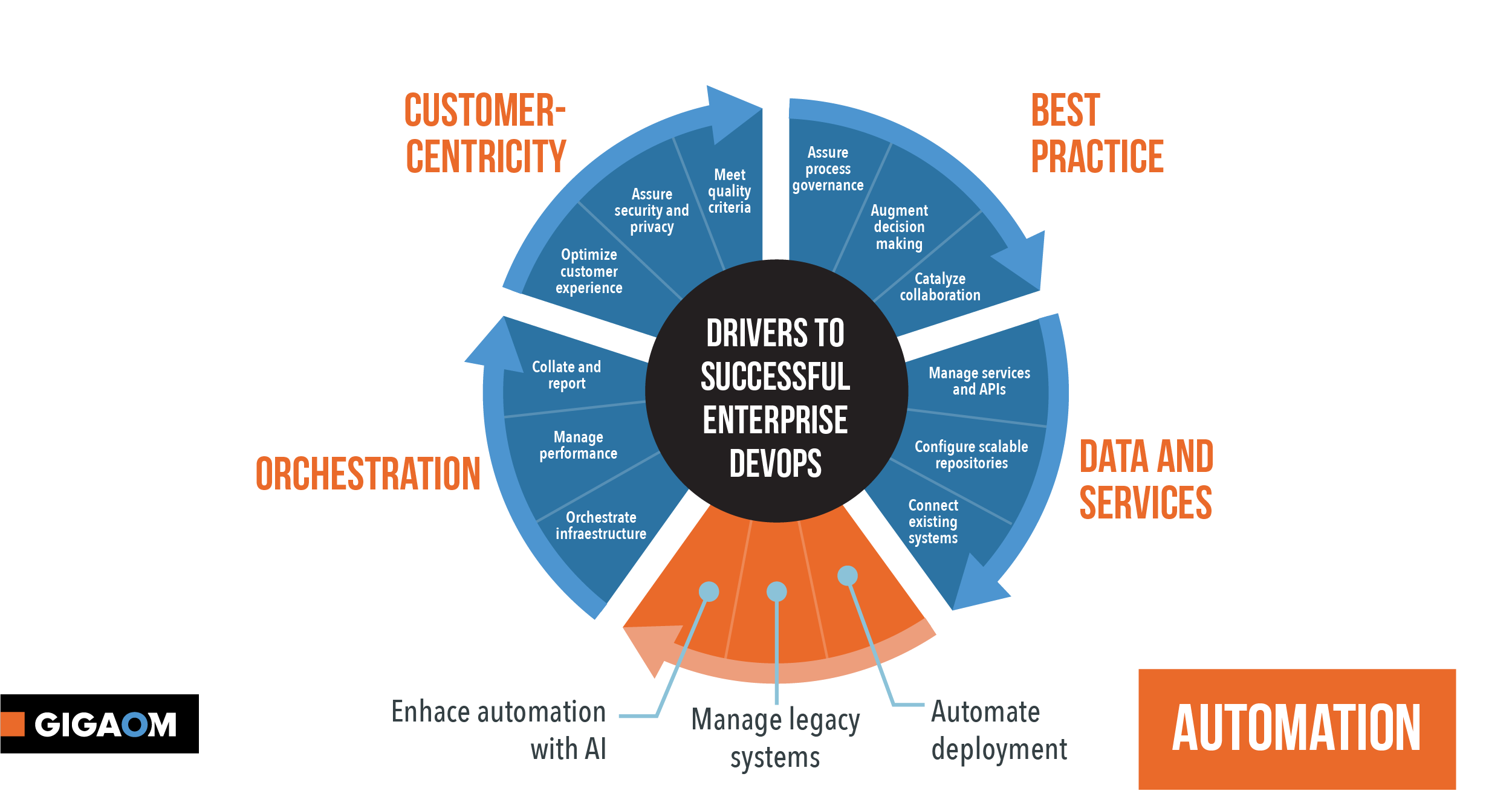Table of Contents
- Summary
- Automate the Development Pipeline
- Migrate and Manage Legacy Systems
- Enhance Decision Making and Automation Through AI
- About Jon Collins
- About GigaOm
- Copyright
1. Summary
This is part 5 of a 6-part report, access all other parts here:
- Part 1 – Introduction, Why Enterprise DevOps and Conclusion
- Part 2 – Shift to Customer-Centricity
- Part 3 – Deliver Agile Best Practice
- Part 4 – Connect Data and Services
- Part 6 – Orchestrate and Operate Infrastructure
While in principle DevOps can exist in isolation of tools and technologies, the speed of innovation, and the need for consistency and repeatability drive the need for automation. Many organizations we speak to already have some kind of DevOps-related tooling in place, which may be in use to support non-DevOps approaches. As DevOps scales, so does the need for a comprehensive development and deployment environment. This is not just to enable faster or more frequent release cycles, but also to create new innovation opportunities, for example, through A/B testing or chaos engineering, both of which require additional development headroom.
Enabling delivery of DevOps best practice requires the following areas to be addressed:
- Automate the development pipeline
- Migrate and manage legacy systems
- Enhance automation through AI
We look at each below.
